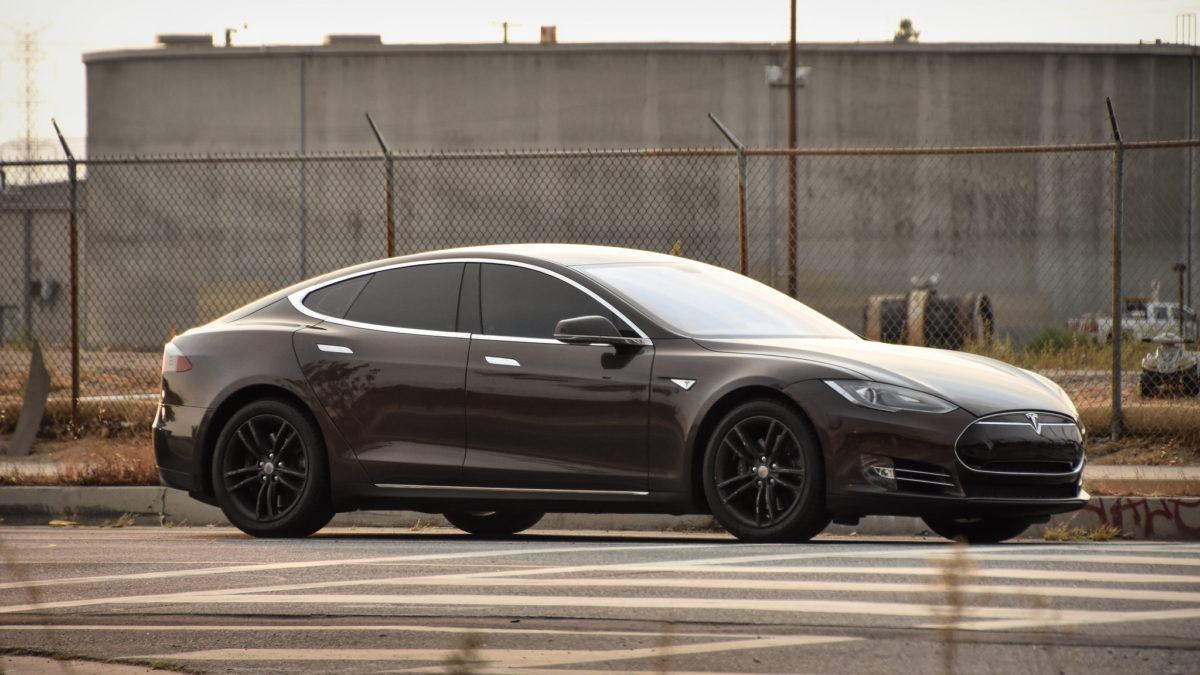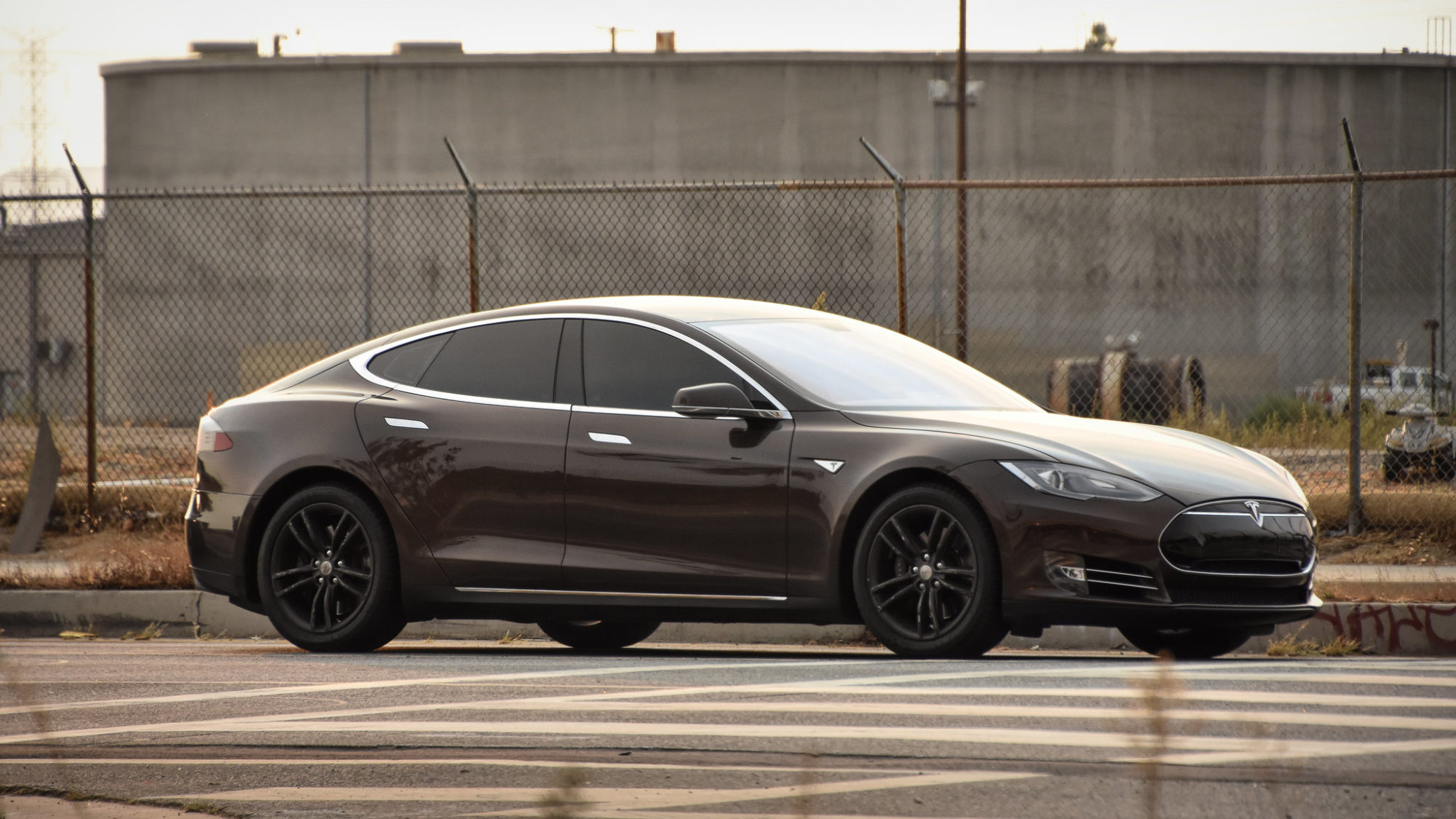
While 2020 was a terrible year for most of us, it was a good one for Tesla, Inc. The Palo Alto, California-based maker of electric cars was on track for all-time highs in revenue and profits (annual figures will be reported later this month). Since the beginning of 2020, Tesla’s share price is up more than 850 percent, making it the most valuable automaker in the world — never mind that Ford F-150s outsell all Teslas, combined, by a factor of five. The rising share price has made Tesla’s founder, Elon Musk, one of the richest people in the world.
Those who believe we can engineer our way out of climate change might say what’s good for Tesla is good for humanity. Transportation is the largest source of carbon emissions in the United States, and Tesla’s success is prodding legacy automakers and startups alike to ditch gasoline and diesel in favor of exhaust-free electric vehicles.
But hold off on the boosterism for a moment. While a Model S may spurn fossil fuels as an energy source, it still relies on all the carbon-intensive resources that make automotive life possible: steel manufacturing, roads, highways, parking spaces, driveways. So even if every car on the road were a Tesla, we’d still be trashing the planet to maintain a lifestyle dictated, in many ways, by individual vehicle ownership. That’s why Tesla and other EV companies are not a panacea for the transportation industry’s climate woes. Rather, they could be a dangerous detour in our bid to heal a degraded planet. The problem, after all, isn’t the internal-cumbustion car. It’s the car itself.
“It almost seems like owning an electric vehicle is a silver bullet in the fight against climate change, but it isn’t,” Alexandre Milovanoff, a University of Toronto postdoc who studies the carbon footprint of electric vehicles, wrote in The Conversation. “What we should also be focused on is whether anyone should use a private vehicle at all.”
This story first appeared in the Bitterroot Newsletter. Sign up below to receive Jake’s latest writing in your inbox.
To be clear, widespread adoption of electric vehicles will help mitigate the worst effects of climate change. Transportation represents both the largest and the fastest-growing segment of greenhouse gas emissions in the United States, and that must be addressed.
But a car’s environmental impact doesn’t begin and end at the tailpipe.
First, there’s the stuff cars are made of. Researchers estimate the production of steel alone accounts for between 5 and 8 percent of global emissions, and an awful lot of that steel ends up in vehicles; in the U.S., the automotive industry trails only the construction sector in its demand for steel. And the batteries that power EVs present their own issues, as the extraction of lithium is both energy-intensive and environmentally hazardous.
Even small, seemingly innocuous parts of vehicles can have harsh ramifications. This is evident in the rivers of the Pacific Northwest. When coho salmon return to urban streams, many — sometimes 90 percent of them — die within hours, well before they can spawn. For decades, scientists up and down the West coast were flummoxed — what was the killer? Finally, a team led by University of Washington Tacoma researchers discovered the culprit: a chemical used in the production of tires. “Any vehicle is implicated,” Lynda Mapes wrote about the findings in The Seattle Times, “whether gasoline-powered or electric … . If it’s got a tire, and it moves on a road, it’s part of the problem.”
Also problematic — perhaps more so — is the way cars have fundamentally shaped our built environment. Even in dense cities, between 40 and 60 percent of all space is dedicated to cars in the form of streets, alleys, parking lots and the like. That share only increases as you sprawl away from downtown areas to suburbs and exurbs where strip malls, drive-thrus, and huge parking lots are connected by multilane highways and arterials.
Research tells us that roads and urban sprawl have increased our energy consumption, fragmented or eliminated plant and animal habitats, degraded soil, and boosted water and air pollution. I’m aware of only two things that simultaneously heighten risk for both flood and fire: climate change and urban sprawl.
Electric vehicles will solve none of these problems; perversely, they might perpetuate them by triggering the Jevons paradox, in which increased efficiency of a product leads to an overall increase of its use. The concept has proven true time and again — everything from lightbulbs to iron smelters are more efficient than they were at the beginning of the industrial revolution, yet our carbon output continues to climb.
Subscribe to Jevonian thinking, and Musk’s vision of fully electric, autonomous vehicles — which is shared by Silicon Valley powerhouses Alphabet and Apple — is a bit scary. Under that scenario, personal transportation will become so easy, so seamless, that sprawl and roads could become even more ingrained in the American way of life. That’s why, contrary to the messaging of EV boosters in Silicon Valley and Detroit, researchers say the best way to green up our transportation system is to get people to travel by foot, bike, or bus.
Viewed through this lens, Tesla’s 2020 ascendancy isn’t a sign that environmentalism has infiltrated Wall Street. On the contrary; Tesla’s cars are more of the same, their climate-crusading status more marketing ploy than fact. Musk himself has hinted at this. If Tesla’s visionary was truly confident in his ability to save the planet, one would think he’d spend less time planning to colonize Mars.
All this isn’t to say that Tesla, Inc. is bungling its climate promises — we just pay attention to the wrong part of the business. Tesla’s renewable energy and storage division is one of the most sophisticated in the world, and — unlike cars — we actually need more solar panels and batteries if we’re going to avoid cooking the planet.
Over the years, Tesla has built an impressive roster of integrated energy products. Its Solar Roof shingles turn your roof into a mini power plant, the energy from which can be stored in a Powerwall battery to reduce your reliance on the grid, or provide backup electricity in the case of an outage. Most important is Tesla’s huge Megapack, a big battery that utilities can use to store wind and solar energy for use during peak demand times. In California, Megapacks will help PG&E avoid the wildfire-induced blackouts that have become common in recent years. Further, the deployment of batteries like this could end our reliance on so-called peaker plants, which usually burn natural gas.
So one division of Tesla is, indeed, moving in a decidedly green direction. Too bad Tesla’s energy products accounted for only 6 percent of its revenue in 2019, and an even smaller share through the first three quarters of 2020 (full 2020 financials will come later this month). The company’s skyrocketing share price got all the attention last year, but the important number to watch will be the firm’s solar-and-battery revenue. If Tesla is indeed a harbinger of America’s climate response, then it will be a good day when the company makes more money selling batteries than cars.

Some former Southern enslaved people and their descendants followed the American dream westward, where they created towns to homestead together. Part 8 of The Modern West’s Ghost Town(ing) series takes you to two of those towns to see what today’s Western small towns now can learn from their stories.
Worth a Read
Top stories from around the West
Three Western Republicans — Liz Cheney of Wyoming, and Jaime Herrera-Beutler and Dan Newhouse of Washington — voted to impeach President Donald Trump for inciting an insurrection at the Capitol. The Senate trial is set to begin around the time Joe Biden is inaugurated.
•••
It’s like the testing fiasco all over again. Absent federal help, states — California, Utah, and Colorado among them — are struggling to efficiently and effectively distribute doses of the COVID-19 vaccine. And doctors in Arizona are preparing to ration care.
•••
Jack Healy of The New York Times has this devastating story about Native American elders who are dying from COVID-19. “It’s like we’re having a cultural book-burning. We’re losing a historical record, encyclopedias.”
•••
It doesn’t matter where you live in the West — megafires threaten your health. Matthew Brown of the Associated Press reports that, according to a new study, wildfires accounted for half of the region’s air pollution from 2016-2018.
•••
Las Vegas casino magnate Sheldon Adelson died this week. As The New York Times writes, Adelson was a profligate Republican donor, and his death could change the way the party campaigns.
•••
To see how extremism has become institutionalized, look no further than Arizona’s GOP. Great analysis from Ronald Hansen and Yvonne Wingett Sanchez of the Arizona Republic.
Like Bitterroot? Spread the word.

Share with a friend | Watch a cat video | View previous newsletters

